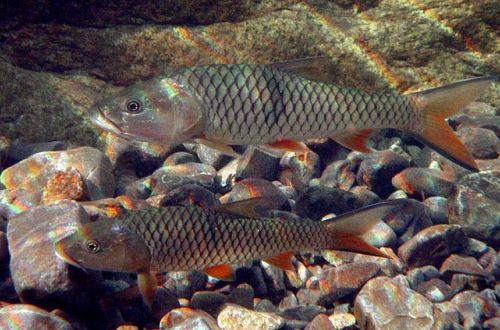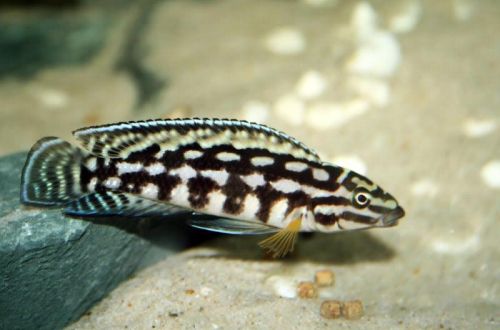
Barbus Hampala
Hampala Barb or Jungle Perch, scientific name Hampala macrolepidota, belongs to the Cyprinidae family. Relatively large freshwater predator. Only suitable for very large aquariums. In its natural habitat it is popular in sport fishing.

Contents
Habitat
The fish is native to Southeast Asia. The natural habitat extends over vast areas from the southwestern provinces of China, Myanmar, along Thailand to Malaysia and the Greater Sunda Islands (Kalimantan, Sumatra and Java). Inhabits the channels of all major rivers in the region: Mekong, Chao Phraya, Maeklong. As well as the basin of smaller rivers, lakes, canals, reservoirs, etc.
It occurs everywhere, but prefers riverbeds with clear, clean water, rich in oxygen, with substrates of sand, gravel, and stones. During the rainy season, it swims to flooded areas of tropical forests for spawning.
Brief information:
- The volume of the aquarium – from 500 liters.
- Temperature – 20-26°C
- Value pH — 5.5–8.0
- Water hardness – 2-20 dGH
- Substrate type – any
- Lighting – moderate
- Brackish water – no
- Water movement – moderate
- The size of the fish is up to 70 cm.
- Nutrition – high protein foods, live foods
- Temperament – peaceful active fish
- Content in a group of 5 individuals
Description
Adults reach a length of 50-70 cm and weight up to 5 kg. The color is light gray or silver. The tail is red with dark edges. Reddish shades are also present on the remaining fins. A characteristic feature in the body pattern is a large vertical black stripe extending below the dorsal fin. A dark spot is noticeable at the base of the tail.
Young fish have a pattern and body color of 5-6 vertical stripes on a reddish background. Fins are translucent.
Sexual dimorphism is weakly expressed. There are no clear visible differences between male and female.
Food
Predatory fish. In nature, it feeds on small fish, crustaceans, and amphibians. At a young age, insects and worms form the basis of the diet. In a home aquarium, similar products should be served, or pieces of fish meat, shrimp, mussels. It is permissible to use dry food, but in limited quantities as a source of vitamins and trace elements.
Maintenance and care, arrangement of the aquarium
The size of the aquarium, even for one individual, should start from 500 liters. Registration is not so important, provided there are free areas for swimming.
It is important to ensure high water quality. Being a native of flowing water bodies, the Hampala Barbus does not tolerate the accumulation of organic waste, and also needs a high concentration of dissolved oxygen in the water.
The key to successful maintenance is regular maintenance of the aquarium and equipping it with a productive filtration system.
Behavior and Compatibility
Despite its predatory nature, the Jungle Perch is peacefully disposed to fish of comparable size. For example, Red-tailed and Silver barbs, Hard-lipped Barbs, Hipsy barbs will become good neighbors. Smaller species will inevitably be seen as food.
Breeding / breeding
In their natural habitat, breeding is seasonal and occurs during the monsoon period. Cases of successful breeding in the home aquarium have not been recorded.
Fish diseases
Hardy fish, cases of disease are rare. The main causes of disease are unsuitable habitat and poor food quality. If you keep in spacious aquariums and serve fresh food, then there are no problems.





